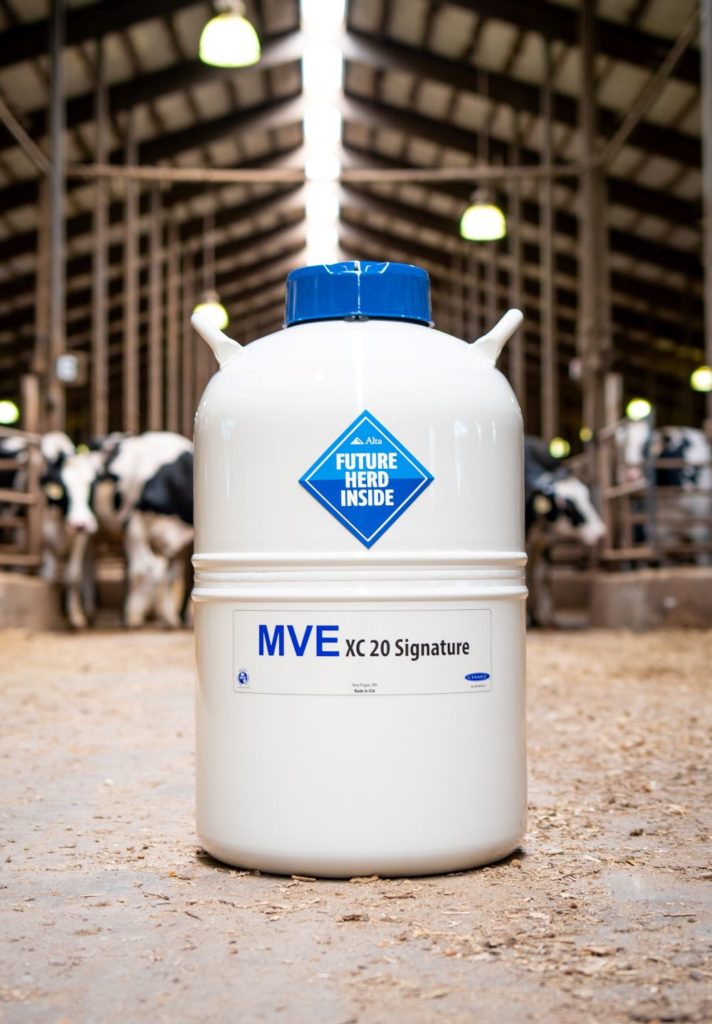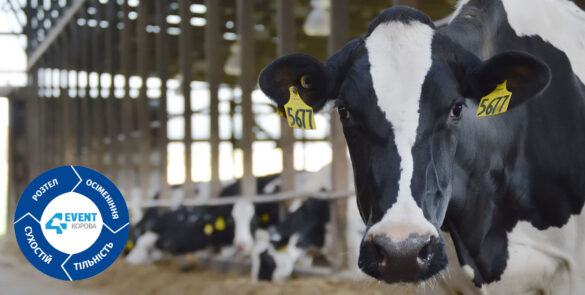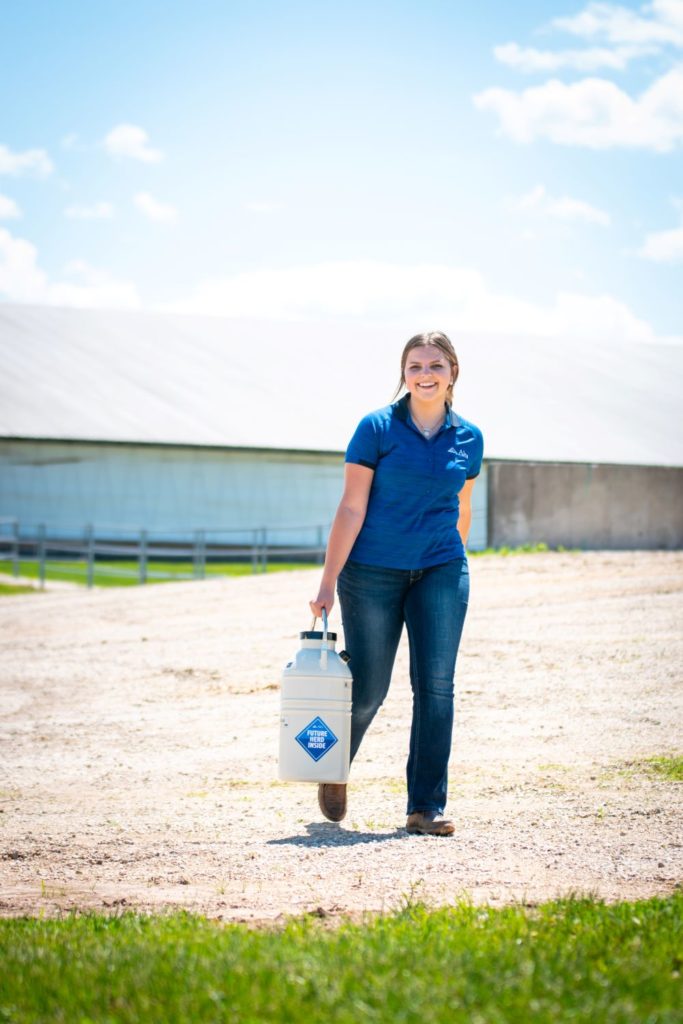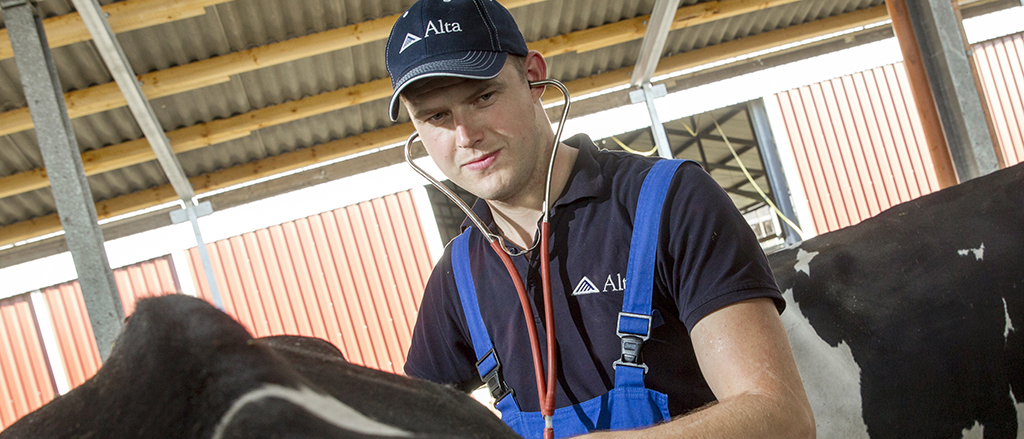Most of us misunderstand heritability. In simple terms, for any given trait, heritability tells us how much of the difference in actual performance is due to genetics, as opposed to management or the environment.
To better understand, think about two cows in two different herds. How much of the difference in their milk production is due to genetics? How much is due to management or environment? It turns out about 30% of the milk production difference is due to genetics, while 70% is due to management and environment. Therefore, milk has a heritability of 0.30.
What about pregnancy rates? Management and environment account for the 96% majority of variation between daughters. So the influence of genetics is minor, at just 4%. Thus, Daughter Pregnancy Rate (DPR) has a heritability of 0.04.
We commonly refer to the health traits like Productive Life (PL), DPR and Somatic Cell Score (SCS) as the lower heritability traits. Many producers believe that low heritability equates to less, or slower, genetic progress. However, in spite of lower heritability, it would be wrong to conclude that DPR, PL or SCS are insignificant as a result.
Perspective is important
In genetics, accuracy shows through when we evaluate results within one herd. In that herd, if we evaluate within a specific lactation group, and then within a specific time of freshening, we find a contemporary group. By evaluating within one contemporary group, we reduce the impact of management and environmental differences.
The overall heritability for health traits like DPR and PL is low. When we break our evaluations down into contemporary groups, that’s when we find the true genetic differences.
The proof is in the numbers
Take this real-life example from a 1,500-cow dairy with very good reproductive performance. We’ve separated out first lactation cows into four groups, based on their sire’s DPR. It’s clear to see that the high DPR sires create daughters that become pregnant more quickly than the daughters of low DPR sires.
| Table 1 | # of cows | Average Sire DPR | Actual preg rate |
| Top 25% – High DPR | 174 | 2.3 | 27% |
| Bottom 25% – Low DPR | 137 | -1.1 | 20% |
| difference | 3.4 | 7% |
The same goes for Productive Life. Despite the low heritability at less than 9%, PL can make a real, noticeable difference in your herd.
This table compares how long the daughters of the industry’s best ten PL bulls and daughters of the industry’s bottom ten PL sires will last in a given herd. You can see that a higher percentage of high PL daughters, represented by the dark blue bars, remain in a herd than their low PL counterparts.
When you select for the lowly heritable PL, you will certainly create healthier, longer-living cows in your herd.
Focus on the economics
As a progressive dairy producer, don’t let confusion about heritability prevent you from using the right genetic tools to improve your herd. Health traits are economically important, and making improvement in these areas can have a huge impact on your bottom line.
Many traits have a high heritability, but no economic importance. In other words, we can make a lot of progress for these traits very quickly, but it will not make a more profitable cow.
A couple examples of high heritability traits are coat color and polled. Both of these traits have a heritability of 100 percent because they are completely controlled by genetics. However, even if we can make cows red or polled in one generation, what is the economic value of that?
By comparison, the economic value of more fertile cows that last longer because of fewer metabolic problems, fewer cases of mastitis, and less calving difficulty is clear to see. These genetic features make a more profitable production unit for each and every farm.
Selection secrets for healthier cows
When you set or reevaluate your genetic plan, take the following tips into account to maximize progress in the direction of your goals.
1. Define your goals
To set the right goals, first identify the most common reasons for culling in your herd. Is it reproduction, milk production, mastitis? This information gives you the basis for the genetic decisions you make going forward.
2. Choose your tools
Health traits offer dairy producers some powerful tools to help correct for low reproduction, metabolic problems, etc. Identify how important each of these trouble areas are to you. Place a proportionate emphasis on these traits when choosing the group of sires to use on your dairy.
3. Customize the solution
Industry standard selection indexes put different and continually changing weights on health traits. So don’t assume they reflect your individual goals and needs. Work with your trusted Alta advisor to make sure your genetic plan is customized to match your current situation and future goals.








